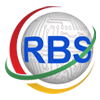Myths of Cloud-Based Software
Amid the growing wave of technological innovation, cloud architecture has become widely renowned for its power to leverage resources off-premise on any device, virtually anywhere in the world. However, a manifold of benefits rendered from using a cloud-based software is left overlooked due to misconceptions about adopting a cloud architecture. Some common myths regarding cloud software are:
Costly Investment
MYTH: There is an underlying myth that adopting a Cloud infrastructure will be a costly investment due to transforming the business structure and implementation process.
- Quite frankly, deploying a true cloud architecture system into a terminal will do the opposite. The most common economic rationale for investing in cloud architecture resources is the elimination of up-front IT investments. The removal or reduction in up-front financial investments enables terminals to start small and increase their IT resource allocation accordingly, whenever they require.</p>
- As a result, it is integral for every terminal to consider the Return on Investment (ROI) which can be highly enhanced if the cloud TOS provider follows a ‘pay-as-you-go’ model like the. This feature provides enterprises with the ability to release any unnecessary cloud computing resources that are no longer needed.
- If the software is truly and completely on the cloud, then on-premise IT infrastructure and applications are no longer required, enabling terminals to save massive amounts in capital costs.
Reduced Control and Manageability
MYTH: Having less control over own data is a popular myth which stems from the presumption that IT infrastructure is no longer managed locally but instead, is now managed, monitored, and maintained on the web by the service provider.
- However, greater control and manageability can arguably counteract this misconception as cloud software in conjunction with IoT, facilitates mobility since stakeholders are warranted access to data and information from any location with any device.
- Although terminal operators and personnel will only be able to control the front-end infrastructure, the information, data, and applications operating the platform, allows terminals to focus their resources on other areas to engender growth or implement advancements.
- As opposed to investing large amounts in upgrading existing solutions on-premise which can also be extremely time consuming and costly, cloud-based services, if entirely on the cloud, can meet this demand instantly and seamlessly.
Security Vulnerability
MYTH: Cloud architecture weakening the security structure of a TOS protecting the data and information belonging to a terminal persists as a myth.
- Cloud software providers, as well as cloud service providers, must follow strict regulation and comply with the industry requirements such as the ISO Standards.
- These policies are heavily enforced to both cloud software providers and cloud service providers which ensures that a safe and protected environment is created for maintaining Big Data in a terminal.
- Many terminals which have yet to adopt a TOS completely on the cloud are more likely to face the risk of data and information losses because of their current software and hardware malfunctioning. Due to cloud-based services storing all information and data in one location safely, it mitigates this risk of data and information loss.
Terminals that realize the real benefits of cloud technology can leverage greater opportunities which allow for a higher ROI, increased control and manageability of data, and can operate as a safer system. However, some enterprise customers are more inclined to deter from these opportunities derived from cloud software because they are only looking at all the reasons not to. Don’t fret and make more by doing less with a complete TOS that is entirely on the Cloud.
